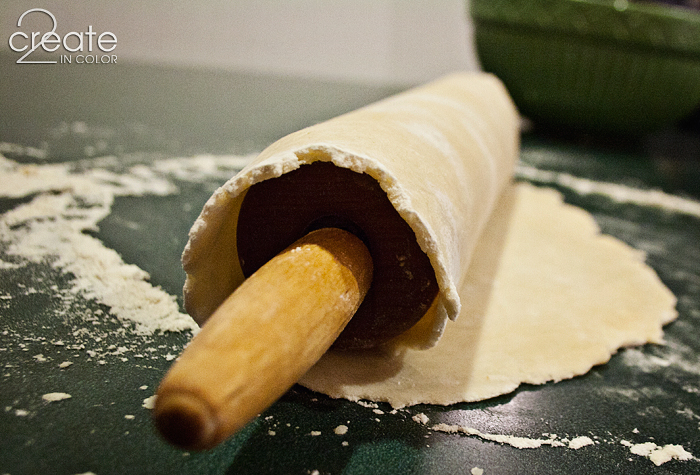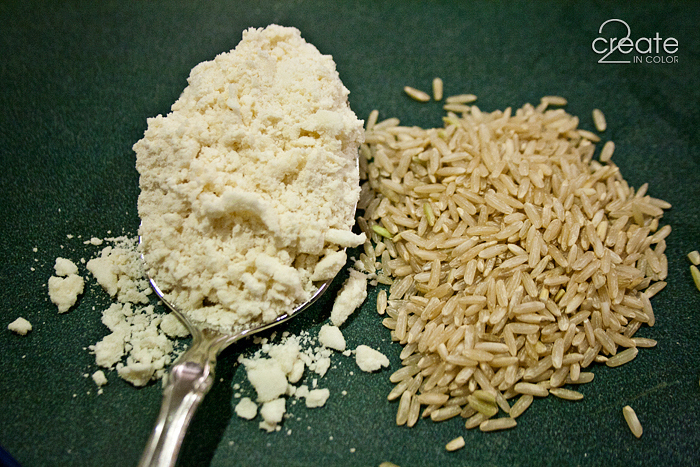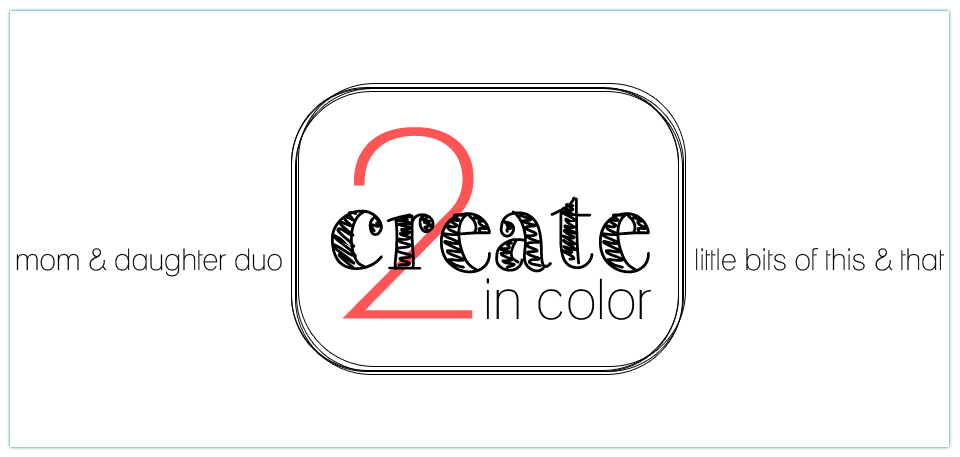
How are your pie crust skills? After one embarrassing episode of blueberry tarts early in our marriage, I have worked at mine. I like to think that I’ve found a few key steps that will help you create good – no, let’s make that excellent! – pie crust from scratch. But even if you already make a good crust you might find some tricks to use. If you have any to share with me, I would love to hear them!
All that I can say about those blueberry tarts is: the filling was good, once we scooped it out of its organic bowls ;) Those tart shells … well, they might have even survived the dishwasher.
I will bring you a new pie crust recipe or technique every month this year. It is the Year of Pie Crust! So ring the tardy bell, because Pie Crust Class is about to begin!

Pie crust has just 3 main ingredients: flour, a fat, and water. We add salt to tweak the flavor but it isn’t essential to the success of the crust. I add sugar, because I like a nice toasty color to my crusts – sugar helps with that, but also isn’t essential to success. Other ingredients can be used to change the texture, but we’re starting with the basics!
After you know what your filling will be, and after you have your ingredients rounded up, there are only 3 steps to pie crust making. That’s right, only 3 things to master!
(I am hearing myself saying this in an annoying info-mercial voice right now. I’ll try to keep my enthusiasm under control, but really! You CAN do this!)
Three important STEPS TO pie crust making:
- “Cut” (combine) the flour and fat.
- Add liquid evenly without overworking the mixture.
- Roll the crust out successfully without overworking it.
Some of us like to know the technical details about what we are making, like me! I can avoid the pitfalls and work with assurance if I know. I love Alton Brown :) If you do, too, then here’s the Alton-Brown-style segment of the post…
The important FACTS about pie crust success:
- Good pie crust is made from bits of fat, coated and surrounded by flour. When the flour is moistened, it glues the bits together with starch and gluten. When you roll the dough, you create flattened layers of these ingredients and develop the gluten a little bit.
- Keep things cold. If the fat starts to melt and the flour gets greasy, it can’t absorb the water and usually won’t make a workable crust. If you do manage to make dough, it won’t bake right.
- Don’t overwork the dough in mixing or rolling – pie crust is the opposite of bread-making. We don’t want the gluten to develop a strong springy structure (that’s how you end up with organic bowls holding blueberry filling…)
- How it works in the oven: fat melts and fries the flour that surrounds it; water turns into steam making layers stay separate – flaky and crisp, signs of a great crust.
~~~ Armed with this knowledge, and your pie crust coach (ME!), here we go! ~~~
For a practice crust that doesn’t waste ingredients, cost much, take special considerations, or require you to actually make a full-on pie, this is the recipe for today:
PRACTICE PIE CRUST RECIPE
1 cup flour
1/3 cup shortening
¼ tsp salt
1 Tbsp sugar
Water and ice
Yes, we’re using shortening this time. It’s a good place to start for addressing the basics.
And just so you know, ever since Crisco sticks came out, I do NOT measure messy messy shortening any more. I adjusted the pie crust recipe so I use 1 full stick (1 c.) of Crisco and a nice even 3 c. flour. Yes, it makes more dough. But I never come up short when rolling out crusts, and I always have enough for pie crust embellishments if I want. Sometimes I just throw the extra out if I am in a hurry — the tradeoff is worth it to me. The Practice Recipe is 1/3 of my full batch.
I’ve got a super-simple galette recipe for you to use this practice crust later. All you have to do is peel and slice 2-3 apples/pears! OK, a little cinnamon-sugar and a couple teaspoons of butter are nice to use, too.
Step 1: Cutting the shortening into the flour.
From fingers to advanced kitchen machines, you have many options for combining the flour and shortening. For a small batch I usually use my pastry blender. Here are a few choices and how to get them to work for you.

This is what the goal is – particles of shortening coated by flour, ranging in size from small rice to peas. You’ll see my fingers in some photos to give you a sense of scale.
–>Place flour, salt, and shortening into bowl.
Pastry blenders do the job well. I limit my batches to the 3 cups of flour size when I use mine. Without a pastry blender, cut with two knives (like cutting a plate of spaghetti for kids.)

Keep going after the largest chunks of shortening with the pastry blender.

How to: Push the blender into the shortening, knock shortening off the wires/blades back into the flour, cover with flour, repeat. Eventually it stops sticking to the blades so much. Be sure to work the flour from the bottom of the bowl up into the mix.
Drawbacks are: takes longer than food processor.
Advantages: more organic – the only way more so is to use your fingers*; easier to get things evenly distributed; no risk of melting the shortening into the flour; fewer dishes. (Hey! It’s an important consideration!
Electric mixer with wire whips/beaters can be used if you remember that with more speed, you get more heating from friction, and one of our goals is to keep things cool. For large batches I use my ancient Bosch Kitchen Machine.

How to: First copy the pastry blender action with the non-running beaters by breaking up the shortening and covering it with flour a couple times, then turn on the mixer. You are usually left with some larger pieces that need to be smashed into the flour by hand (red circle in photo). (Smashed: highly technical term ;) )
Disadvantages: not evenly distributed (see red circle in photo), heat can build up if you are whipping too long (small risk), possibly over-processing things into a paste, bits of fat/flour can go flying around your kitchen.
Advantages: quicker than by hand, less clean up than a food processor.
Food processors can make quick – I mean quick! – work of this step. You must make sure that your shortening is chilled thoroughly, and then chopped into slices or chunks. You get significant heating from friction with this method, which can start melting the fat! Chilling your flour and workbowl is a good idea.

How to: put chunks of chilled shortening on top of flour in workbowl with steel blade. Process five 1-second pulses. Check for progress. Process in 1-2 second pulses until you have the right size pieces. Picture 1: five 1-sec pulses. Picture 2: 5 more 1-sec pulses Picture 3: three 2-sec pulses. Done. Your times may be different!
Disadvantages: more clean up, take the very real risk of overheating the fat and melting it into the flour (pie crust Fail!), over-processing into paste.
Advantages: fast – mine was done after the food processor ran only 16 seconds total… in 13 pulses.
*Why am I not suggesting working the flour and shortening together by hand? For a shortening crust plus if you are a beginner, it is easy to overheat the mixture from your hands. It’s messy. It’s also fun and effective, so when we do butter crusts we’ll talk fingers!
~~~ So choose your method and make your crumbs! ~~~
This is where I am going to share three of my special techniques with you. One is preparing the water, another is a detour to the freezer, and the third is my mixing technique. I’m so excited for you to have these tricks techniques if you are new to pie crust or have had trouble with it before!!!
Tip #1 Put your fat/flour crumb mixture into the freezer for 15-30 minutes. If your freezer is too full to hold the bowl, transfer *in a fluffy way* the crumbs into a plastic bag and lay them in. It only takes half the time in a bag. You want the mixture C.O.L.D. but not frozen — we don’t want the water to freeze when we try to add it. I’m just sayin’… it’s happened.
Tip #2 Add sugar (for flavor, and for browning) to the water, and not the flour mixture. You get more even browning, and won’t get a speckled appearance from undisolved sugar crystals. That’s happened, too.

How to: (for a full batch) Dissolve up to 3 Tbsp sugar in 1/2 cup hottest water, stirring until clear. Add about ½ cup ice cubes and stir until as melted as they will get. Top off to 1-cup volume with coldest water and stir. Remove ice bits. If your ice had completely melted, your water was not cold enough. Add more ice and stir.
You will not use all this water, but this is enough for a full batch. (3 c. flour + 1 c. shortening) For today’s practice batch, you can reduce it to 1Tbsp sugar, ¼ c. hothot water, and ice cubes to make about ½ cup total icy cold Cold COLD water.
~~~ So freeze your crumbs and make the icy sugar water. You’ll need them for adding Step 2… ~~~
Step 2 Add liquid evenly without overworking.
Here’s where the risk of overworking the mixture and making a tough crust is — when we add water.
Instructions typically say drizzle a couple tablespoons of cold water over the crumbs, toss to combine, repeat until it “comes together.” But it is the tossing and the final moisture content that are critical things, and they aren’t usually addressed. They are here, though!
Tip #3 Use a fork and a fluffing, tossing motion – lifting and sprinkling the bits, doing your best to prevent the crumbs from sticking together for as long as possible throughout this step. The goal is to work plenty of liquid in, without letting that tough gluten develop (which happens when you mess with wet flour.)
If you see white paste (from wet flour) on the clumps, you need to stop adding water. Ideally, you want to stop juuuuust before this point. That takes experience so don’t be timid – keep making more pie crust!
Here’s what it looks like for me.

How to: For today’s Practice Pie Crust Recipe, start by drizzling about 1.5 Tbsp of your icy water over the top of the crumbs; toss briefly. Remember your goal is to try to prevent any of this “coming together” business for as long as possible. Add another 1 Tbsp water, aiming for the driest spots; toss briefly again. Make sure you are pulling the dry bits up from the bottom of your bowl. Repeat .5 – 1 Tbsp additions of ice water until the dough starts bringing itself into large chunks. You will probably use between 2 1/2 Tbsp to 4 Tbsp.
How much water will it take? This depends completely on the moisture in your flour, the humidity, and other magical kitchen factors. (Note: I combined the flour/shortening mixtures from all three cutting methods I showed you, so I had a full batch of crust when I was adding the water here.)
On this day, I used 9 Tbsp. water in my recipe with 3 c. flour — this is in a damp climate in a cool kitchen. It can easily take 12 Tbsp or more for a full batch.
Most people don’t add this much water. I do. The reasons are, that it gives you a crust that is less likely to tear from being too dry (either to start with or because of evaporation) and it allows you the freedom to use more flour in the rolling process (to prevent the greasy aspect from sticking) without drying out the interior of the dough.
It also makes the rolling go quickly and easily because the dough is softer. The rolled crust ends up feeling like a piece of supple suede, not a fragile piece of frustrating crumbly stuff.
If at any time from this point on you need to leave the dough, cover it with plastic wrap to prevent drying and make sure it stays cool.
Step 3 Rolling the dough without overworking it
Essential equipment: rolling pin, your choice. Prepare a large flat surface, clean and dry, to roll the crust onto. I use my bare laminate countertop. Have your dough and a cup or so of flour to work with – I put this “bench flour” in a bowl on the side. I keep my bench scraper handy, but usually only need it for clean up. (See big photo below)
Remember, because we added plenty of water to our dough, we don’t have to be very concerned with using too much flour and drying out the dough. WIN!

Prepare your rolling-out area. Scooch the dough clumps in your bowl into 1 mass GENTLY. Divide into parts as needed (Practice Recipe quantity: don’t divide. I have used the practice quantity to roll in the photos.) Place dough onto a well-floured area of your work surface.

(picture 1) After covering your dough ball with flour on top, press it by hand into a disk, then turn it over onto a new floured area. (picture 2) Sprinkle the dough with flour, brush off the extra that doesn’t stick onto the sticky areas, and press by hand into a thinner disk. In picture 3 above, you can see that I have sprinkled the top surface with flour yet again. I have also re-floured the area of bare countertop.
I brush off as much extra flour as possible each time from the top surface. There is no need to use any more than absolutely necessary to prevent sticking.
Once you have flattened the dough by hand and have the dough sitting on a floured area of the work surface, it’s time to use the rolling pin!

Rub flour onto your rolling pin if it sticks to your dough. You can also smooth a thin layer of flour onto the dough where it is sticking. Sometimes I grab flour out of my canister but you can get bits of pie dough in it. This tends to gross out other people who want to use the flour, as well as just being a bad idea to have contaminated flour.

When rolling dough into a circle, it will sometimes begin to tear deeply toward the center. You can push the edges inward to make them smoother, more cohesive, and less likely to tear at any point. This is also how I go about mending a torn edge: press the nearby edges inward all the way back to the start of the tear, then flatten out the ridge of dough that forms so it becomes a new area of untorn crust!
Rolling pin. Use it firmly but not excessively. “Always roll from the center outward” is something you’ll see and hear over and over — it’s true! Roll from the center outward toward the top, then the bottom, then one side and then the other side.
Once you start rolling, you should monitor the dough for two things – one, it should slide on the work surface: not stick, but stretch and glide as you roll it; and two, after it stretches under the rolling pin it should not try to shrink back! More on that coming up*.

Don’t roll right off the edges of the dough; they’ll get too thin. As you near the edges, try to keep the rolling pin at the same level as before. Sprinkle flour, smooth over the dough, and brush off extra whenever needed. (Pictures 1 and 2 above.)
If the dough starts to stick, as it sometimes does about halfway through, here’s how to solve that problem. Above, in the picture 3, I have folded back half the dough after freshly flouring/brushing off the top surface. If the dough is really stuck, use your bench scraper or a thin spatula to peel it up. Below, you see how I am able to get the work surface re-floured by exposing it half at a time.

If the dough is sticking to the work surface, it is important to loosen it up. Otherwise, when it tries to stretch under the rolling pin, you’ll be getting that gluten development going! That’s a big no-no for good pie crust, remember. (Also the dough will just get more and more stuck to the work surface, making it hard to pick up and put in your pie pan.)
*One clue that you are getting gluten development happening is that the dough shrinks back after you roll it each time. If this happens, stop rolling. Cover the dough with plastic wrap, walk away and let it sit there for a time out. After an hour or so you should be good to go again. You need to give it time for the gluten strands to relax so the dough can stretch once more.

There it is! My rolled out pie crust. It is roughly 14″ across, somewhat circular, and about 1/8″ thick. I can see the color of my countertop showing through. It’s not stuck to the counter, nor has it tried to shrink back. It truly feels like suede, and the edges don’t tear or crumble when I pick them up. I haven’t had to put any flour on the top surface or on my rolling pin since I re-floured the counter under the dough in the photos above — it has rolled like a dream.
Altogether, from taking the dough out of the bowl up to this point takes me about 2-3 minutes. Or 10 minutes if I am trying to take pictures and not destroy my camera with floury/pie-crusty hands.
I will be making the galette recipe on a pizza pan. For this recipe your dough should be at least 11″ across at its narrowest, meaning it doesn’t have to be circular. It takes a lot of practice to roll out a circular crust! A galette is about the most forgiving recipe for pie-crust rolling there is :)
Step 4: Moving the crust to your pan
I drape the far edge of my pie crust up over the rolling pin. Then I roll it toward myself so the whole crust is wrapped around. Don’t press down with the rolling pin at this point — we don’t want to press the layers together!

Since my rolling pin spins pretty easily, I have to keep it still while I pick up the crust and position it over the pan. I just sneak my index fingers along the handles until I touch the roller and hold it still.
Once I have the closest (bottom) edge of the crust positioned where I *think* it should be, I gently drape the whole thing off the pin over the pan. Very easy this time since we are using a flat pan! If you need to shift it, you can either pick it back up with the rolling pin, or slide your hands under it part way.
For the galette recipe, we will be folding wide margins of dough up over a pile of fruit, so it can be hanging off the edges like mine. Not a problem.
I have covered my pan with parchment to cover up that ugly pan! LOL (Actually, it is so I don’t have to work very hard to clean the pan later, especially if the fruit’s juices leak out at all.) You can also see in the pictures that I have wrapped and will freeze two disks of remaining dough for future use. Let them come to cool-room temperature then roll!
Cover the crust with plastic wrap! Cover it whether you move it to the pan first, or leave it sitting flat where you rolled it! You want those edges to stay nice and pliable right up to the end!

APPLE PEAR GALETTE RECIPE
a small batch of pie crust (use the Practice Crust Recipe above)
2 apples, peeled, quartered, cored, and sliced 1/8″ thick
1 pear, peeled, quartered, cored, and sliced 1/8″ thick (or another apple)
1 Tbsp sugar mixed with 1/2 tsp ground cinnamon (or your favorite cinn/sugar proportions)
1 Tbsp brown sugar (any form such as muscovado, raw, dark brown… optional)
1 Tbsp butter, melted
Pile half the fruit onto the center of the crust, covering only about a 6″ circle in the center. Sprinkle with some cinnamon sugar. Pile the rest of the fruit on top; sprinkle with cinnamon sugar again. Sprinkle with brown sugar; drizzle with melted butter.
Fold up the margins of the crust in large pleats, working around the galette. If crust tears, mend by smearing some water between the layers. This is only needed if the tear is close to the bottom, and is just so the fruit juices won’t leak out.
If desired, brush crust with water, milk, or beaten egg. Sprinkle with cinnamon sugar (optional.) The pictured galette was brushed with water and then sprinkled with c/sug.
Bake at 400 for 30-40 minutes. If too much browning is occuring, drape a piece of foil over the galette that has a hole torn out of the center for fruit steam to escape. You can also turn down the oven heat to 375. This is a very forgiving recipe.
To tell if it is done, a thin-bladed knife inserted into the fruit should tell you the fruit is soft; also you should hear bubbling juices. These won’t be the syrupy *plop* bubbles of an apple pie, but just fruit/cooking bubble noises.
Let cool, then refrigerate if not eating within a couple hours of it coming out of the oven. Serve plain or with sauce or cream of choice.

And coming up…
Pie Crust School Lesson 2 — February Crust Lesson — Next month, in 3 weeks, I will show you how to make a fantastic chocolate pie just in time for Valentine’s Day! The new pie crust skill will be: baking a crust “blind” — empty. Apparently crusts need fillings to be able to see… ?
Gail




.jpg)